Many instruments currently listed on Reverb are named after the person who designed and built them or, in some cases, who actually invented them. Think Moog, Taylor, Fender, Gibson, PRS, Ludwig, Gretsch, and Steinway for starters.
We know Bob Taylor and Paul Reed Smith can play guitars with their names on the headstock. There’s also evidence that Orville Gibson was an accomplished musician in the 1890s and played the guitar (left–handed) in a quartet. But that’s not the case with every entrepreneur who ever put his own name on a headstock, drumhead, or enclosure.
In fact, some of the key innovators and biggest players in the musical instrument industry were not musicians at all. Driven by a love of music and sound, craftsmen, engineers, and heirs to a luthier legacy without a penchant for playing themselves have innovated and perfected the instruments we know and love.
These are the stories of six of those men who weren’t musically inclined, but still shaped and impacted the musical instrument industry.
C. F. Martin Sr.
For six generations, a member of the Martin family has been managing the Martin Guitar Company, overseeing the construction of some of the world’s finest acoustic guitars. The legacy starts with Christian Frederick Martin Sr., born into a long line of German woodworkers and cabinet makers in 1796.
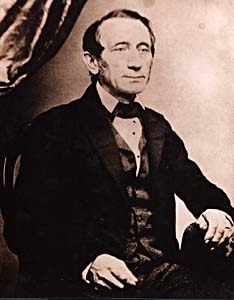
Influenced by his father, Christian became fascinated with the guitar as a teenager. But because violins and cellos were the most popular instruments in Germany, the 15–year–old had to move to Vienna to apprentice with Europe’s best guitar maker, Johann Stauffer.
Thinking there was more opportunity to sell his guitars in America, Martin moved his wife and family to New York City in 1833 to set up a one–man guitar shop. Five years later, he bought eight acres of land in a place that reminded him of the rolling hills of his native Germany: Nazareth, Pennsylvania. The Martin Guitar Factory has been in Nazareth ever since.
When asked about Martin’s musical abilities, Dick Boak, Director of the Museum and Archives at C.F. Martin and Company, answered, “I suspect that C. F. Martin Sr. had a working knowledge of the guitar, could play some basic chords, and could certainly assess the tonal quality and action comfort of the instrument, which is crucial for any luthier.”
Boak also shared that it was Martin’s wife, Ottilia, who had all the musical talent in their family. She was adept on both the guitar and harp, often performing in the family’s Moravian church.
Laurens Hammond
The man who built the world–famous Hammond electric organ may not have been musically inclined, but Laurens Hammond is recognized as one of the most prolific engineers and inventors of the 20th century.
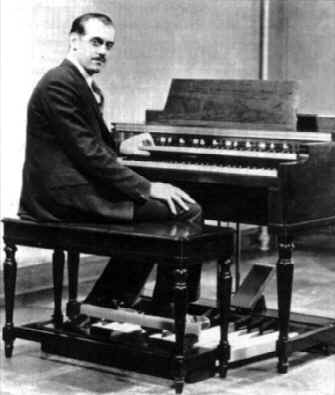
Hammond was only 16 years old when he received his first patent in 1911 for an improved barometer design. After earning a degree from Cornell University in mechanical engineering, Hammond would design marine engines, a device for viewing 3D movies, and even an Electric Bridge Table that automatically shuffled cards.
Hammond found his first great success by designing an accurate electric clock motor, leading to the establishment of the Hammond Clock Company in 1928. But by the mid–1930s, Hammond needed a new invention to keep his company afloat.
Hammond’s imagination, love of church organ music, and need for repurposing his electric clock motors all aligned perfectly when it came time to create the ingenious Hammond electric organ.
Although Hammond couldn’t play the organ, he surrounded himself with employees from a wide range of musical backgrounds to help him test and refine his ambitious invention. The first electric organ was built in 1935 and sold to legendary jazz composer George Gershwin.
Hammond organs were originally sold to churches (to replace bulky, expensive pipe organs), auditoriums, arenas, and ballparks.
But in the 1950s, Hammond hit a home run with the popular B3 organ, and professional musicians took notice. The wide sonic range of the Hammond B3 — often played through a Leslie rotating speaker cabinet — made it popular first with jazz groups, then in R&B, rock, funk, progressive rock, and virtually all genres of music through the 1970s.
When Hammond retired from the Hammond Organ Company in 1960, the prolific inventor had been awarded 90 patents, picking up another 20 before his death in 1973.
Fred Gretsch Sr.
The man who led the Gretsch Company to unprecedented growth for 47 years had knacks for business, innovation, and even banking. But he didn't have a knack for music.
Fred Gretsch Sr. was only 15 when he took over his family’s small Brooklyn, N.Y. music shop in 1895. His father, Friedrich, had started the business in 1883 but died unexpectedly while visiting family in Germany.
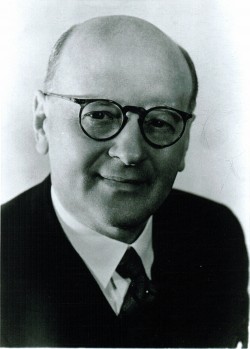
The young, ambitious Gretsch successfully grew the family business and spearheaded the construction of the mammoth, 10–story Gretsch Building on 60 Broadway in 1916.
By the 1920s, the Gretsch Company would become the largest musical instrument manufacturer in the US.
Always looking for ways to improve and innovate, Fred Gretsch Sr. is credited with developing the revolutionary multi–ply drum lamination process around 1920. This was a major improvement over steam–bending a single plank of wood, and made drum shells and hoops lighter, stronger, and more perfectly round.
Gretsch’s new process soon became an industry standard and is still used today by drum manufacturers.
While Fred Sr. was leading his family’s musical instrument business, he also became involved in banking (which he personally enjoyed as much as the music industry). In 1930, Gretsch was named Vice President of Lincoln Savings Bank in Brooklyn and became the bank’s President in 1940.
Two years later — and after 47 years as Gretsch Company president — Fred Sr. retired and turned the reins over to his eldest son, Fred Jr., who would lead the company through Gretsch’s Golden Era in the 1950s and 1960s.
Bob Moog
As a child, Bob Moog was forced to take lessons from his mother, a piano teacher. But he took more so to his father’s knack for tinkering, and often found himself on the basement workbench instead of the piano bench. The young Bob Moog spent countless hours with his father — an electrical engineer — building radios, amplifiers, and even three–chord organs.
Moog’s life would change when he discovered the theremin — the first ever electronic musical instrument — as a teenager in the late 1940s. He became obsessed with the theremin, and started a small business selling theremins and theremin kits that paid his way through several colleges. He’d earn degrees in science, electrical engineering, and engineering physics.
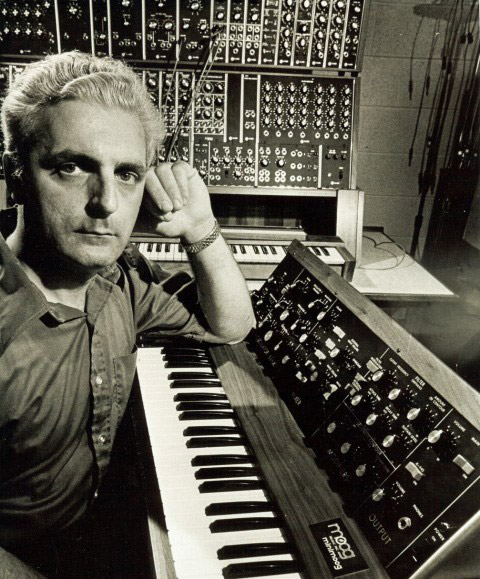
Photo via moogmusic.com
According to Moog, the theremin was the constant thread throughout his 50–year career spent chasing new musical sounds.
After becoming friends with theremin musician Herb Deutsch, the two collaborated to build a synthesizer. Moog’s innovation was connecting a keyboard to the instrument, and that innovation proved a hit at the 1964 Audio Engineering Society Convention. Orders quickly followed.
The Moog synthesizer’s first break came in 1968 when electronic versions of Bach classics were recorded on Wendy Carlos’s Grammy–winning Switched–On Bach. The million–selling LP was a commercial success and gave Moog’s instrument worldwide recognition.
Moog’s next watershed moment came in 1971 with the release of the revolutionary Minimoog Model D. The portable 44–note keyboard that scrapped the modular interface for one with knobs and switches made the Minimoog a practical stage instrument.
This compact, user–friendly instrument was a huge success in the 1970s and 1980s and was popularized by Keith Emerson, Rick Wakeman, Stevie Wonder, Bernie Worrel, Gary Numan, and many more high–profile musicians. The Minimoog’s prominence helped launch the synthesizer boom of the late ‘70s and early ‘80s.
Like other famous engineers who evolved music and the musical instrument, Moog listened to musicians and valued their input and friendship. As Moog once said, “Musicians always come up with stuff I couldn’t imagine when using my instruments. I’m an engineer. I see myself as a toolmaker, and the musicians are my customers. They use my tools.”
Although Bob Moog passed away in 2005, his company, Moog Music, continues his legacy with new and old synthesizer designs, a lauded line of effects, and, of course, two models of theremin.
Joseph Rogers
The founder behind Rogers Drums was neither a musician nor a drum manufacturer when he set up shop in New York in 1849. Rogers made a name for himself in the music industry by crafting high–quality calfskin heads for both drums and the very popular banjo.
Joseph Rogers learned the craft of tanning hides as a boy in Dublin, Ireland. He emigrated to the US in 1840 and opened the nation’s first drumhead business nine years later, based on his tanning expertise. Rogers offered various grades of calfskin hides, which were superior and kept their tone longer than conventional sheepskin hides.
Rogers’ reputation for high–quality heads quickly spread, leading to him supplying the drumheads for the Union Army’s marching drums during the Civil War. Rogers was awarded a blue ribbon and bronze medals for superior drum and banjo heads at the 1883 World’s Fair.
Although Rogers’ grandson, Cleveland, would start building drums in the 1930s, Rogers Drums really came to prominence after the family business was sold in 1953 to Henry Grossman, who owned a wholesale music company.
Under Grossman’s leadership, Rogers Drums experienced a golden age of popularity and innovation from the mid–1950s through the late 1960s. Buddy Rich, Dave Clark, Mick Fleetwood, and other high–profile drummers favored the brand.
Leo Fender
Many people are aware that Clarence Leo Fender couldn’t play a lick on the groundbreaking electric guitars and amps he designed and started mass producing, Henry Ford–style, in the 1950s. Although Fender took some piano and saxophone lessons, those instruments really didn’t stir a fire in him.
We have his uncle to thank for helping Leo find his true passion.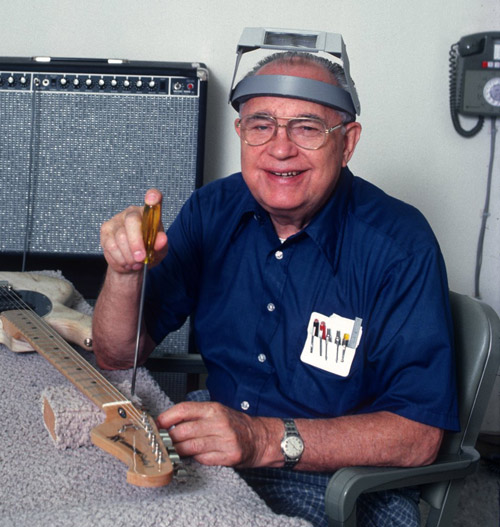
When Leo Fender was 14, he became fascinated with a radio that his uncle had built from spare parts. The radio was still a new and novel invention in the early 1920s, and the loud music blasting from the speaker left a lasting impression on the teenager. Fender learned all he could about radios and electronics, and soon began repairing radios as a hobby.
Fender graduated college in 1930 with a degree in accounting and pursued that career for nearly a decade. Fortunately for the music world, Fender lost several of his accounting jobs during the Great Depression and, out of frustration, decided to pursue the passion that stirred in him as a teenager: repairing radios and amplifiers.
Borrowing $600 against his Ford Model A, Fender started the modest Fender Radio Service in 1938 in Fullerton, California. Seeing the shortcomings of the amps and PA systems he was repairing, the self–taught electronics engineer started designing and building his own.
Leo then set his sights on improving the instruments that plugged into those rugged Fender amps. Piggybacking on the success of Fender’s Hawaiian guitars — better known today as lap steels — Leo Fender set about improving the electric guitar.
In the spring of 1950, Fender introduced the Esquire, the first commercially available, mass–produced solidbody electric guitar. The Telecaster, groundbreaking Precision Bass, and futuristic Stratocaster soon followed. It was just a matter of time before the instruments designed by Leo Fender, the accountant–turned–electronics engineer, would permanently change music and, in turn, popular culture.
Even though he wasn’t a musician, Leo Fender was inducted into the Rock and Roll Hall of Fame in 1992. When the Rolling Stones were inducted in 1989, Keith Richards honored Fender by saying, “Thank God for Leo Fender, who makes these instruments for us to play.”
